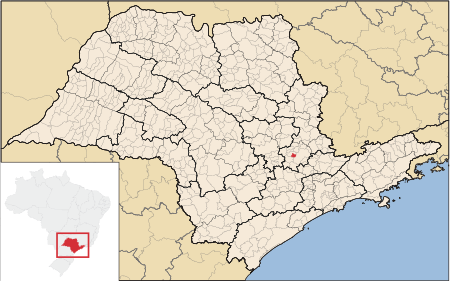Hortolândia

Hortolândia is a Brazilian municipality in the interior of the state of São Paulo. It is part of the Metropolitan Region of Campinas and the Mesoregion and Microregion of Campinas. It is located northwest of the state capital, about 110 km away. It is part of the São Paulo macrometropolis, which exceeds 29 million inhabitants and makes up approximately 75 percent of the state's population. The metropolitan regions of Campinas and São Paulo form the first megalopolis in the southern hemisphere. It is bordered by Sumaré, to the north; Monte Mor, to the south and west; and Campinas, to the east.Hortolândia was founded in 1991, splitting from Sumaré, and the privileged location and proximity to major industrial centers in the country caused the municipality to undergo a rapid demographic and industrial development. Hortolândia is considered a technopole and has several high tech companies, including IBM. These activities make the city have the 76th largest nominal municipal GDP in Brazil, with BR$12.9 billion in 2017. Hortolândia has several campuses of renowned universities, such as the Federal Institute of São Paulo and the Adventist University Center of São Paulo [pt]. Some of the city's main attractions are important green areas that provide space for sports and resting. There are also the cultural projects and events held by the Municipal Secretariat of Culture, the body responsible for projecting the cultural life of Hortolândia.
Excerpt from the Wikipedia article Hortolândia (License: CC BY-SA 3.0, Authors, Images).Hortolândia
Rua Eugênio Cancian, Hortolândia Centro (Hortolândia)
Geographical coordinates (GPS) Address Nearby Places Show on map
Geographical coordinates (GPS)
| Latitude | Longitude |
|---|---|
| N -22.858333333333 ° | E -47.22 ° |
Address
Rua Eugênio Cancian
Rua Eugênio Cancian
13183-080 Hortolândia, Centro (Hortolândia)
São Paulo, Brazil
Open on Google Maps








